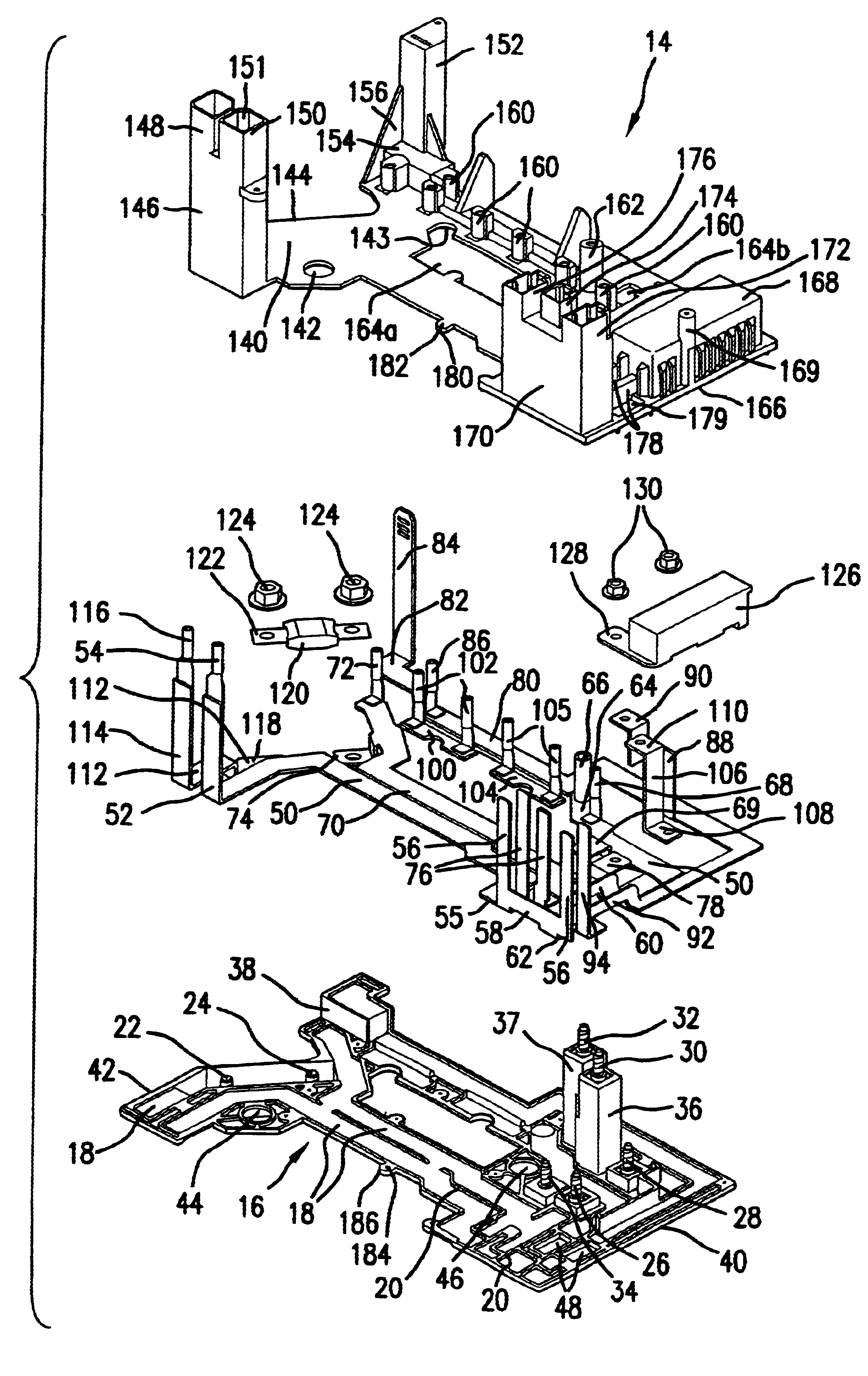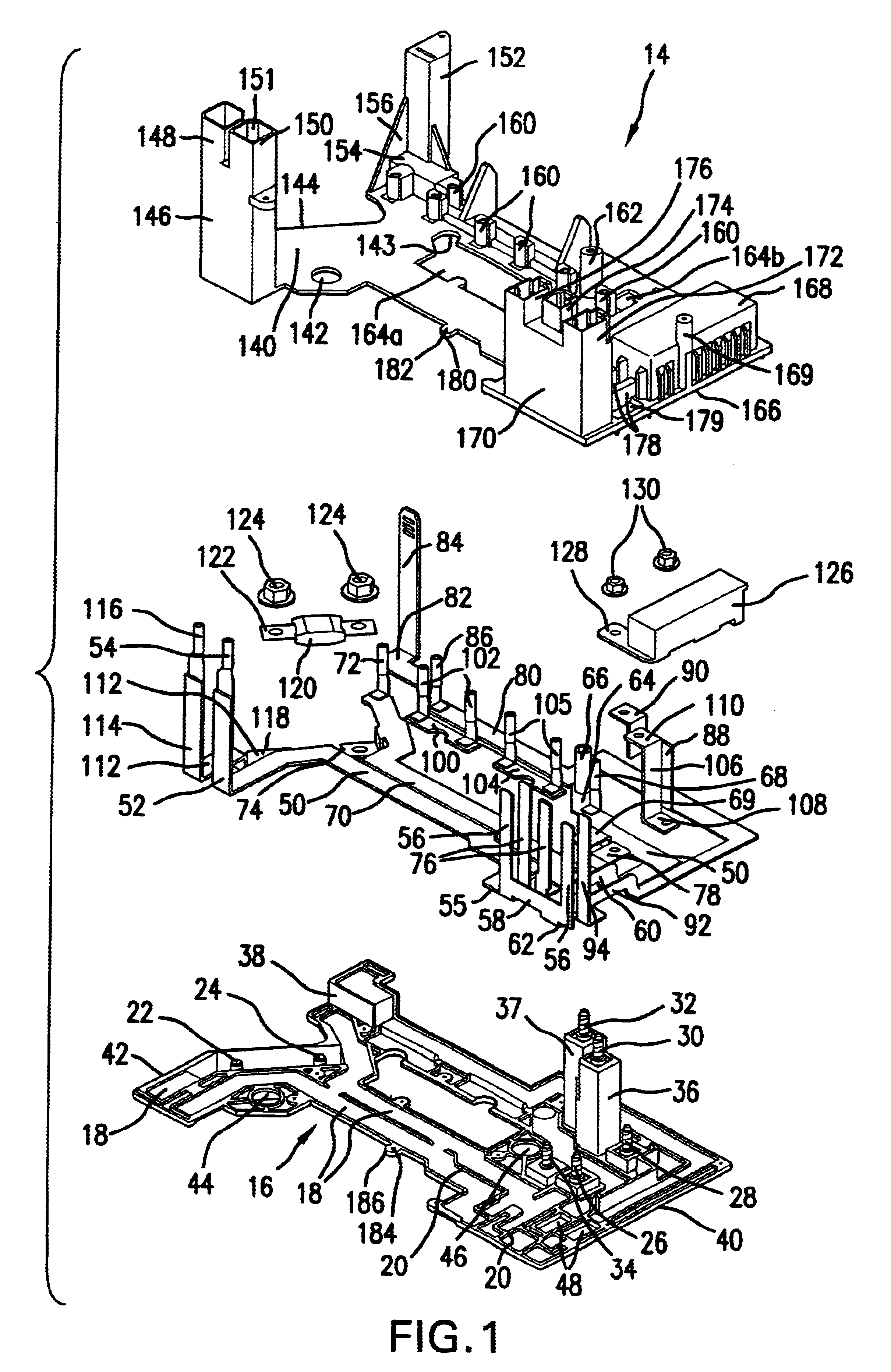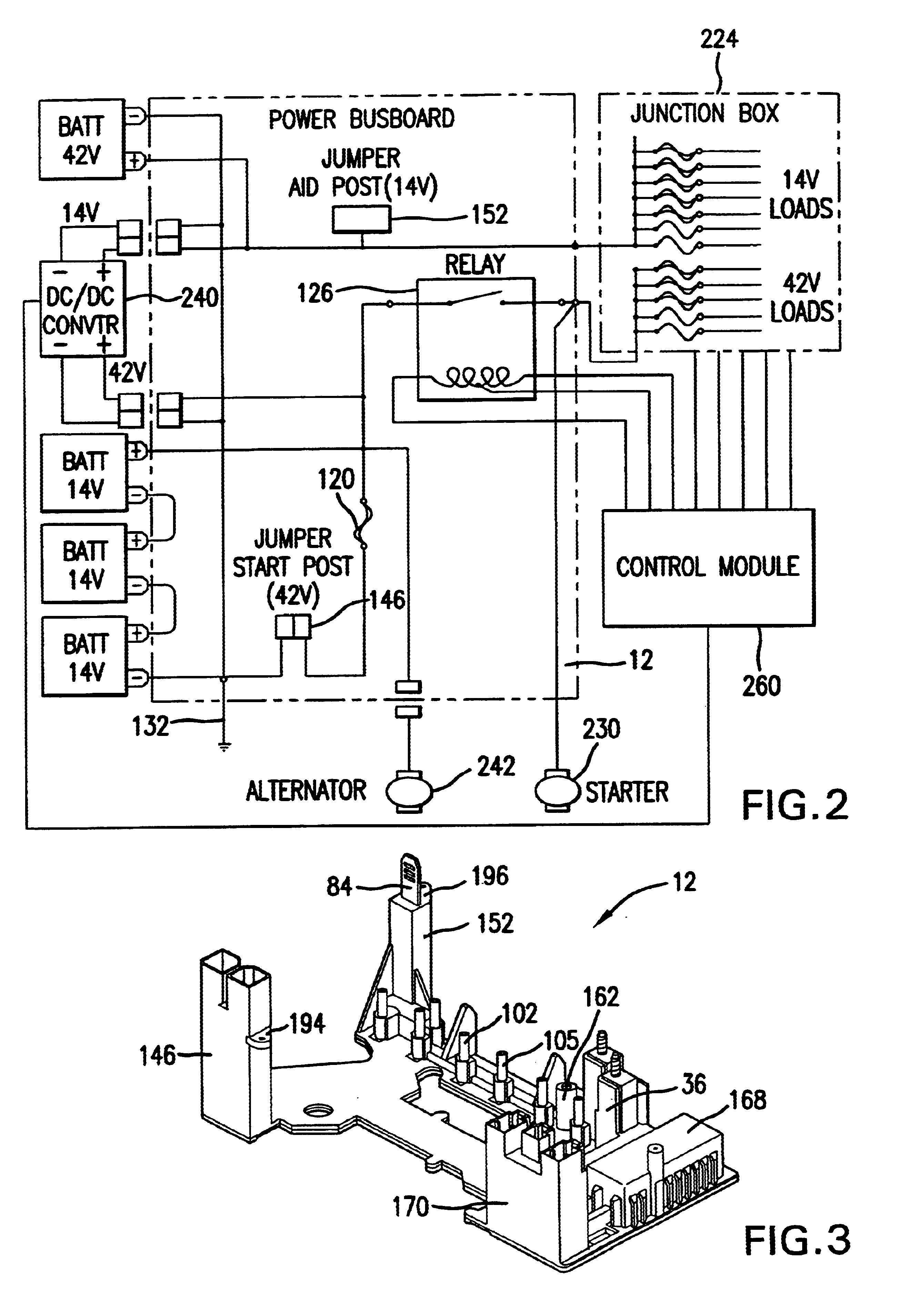Power management assembly
a technology of power management and assembly, which is applied in the direction of dc source parallel operation, machines/engines, electric devices, etc., can solve the problems of not addressing the need for complete, effective power management, and too costly to immediately switch or redesign all existing electrical components, etc., to achieve simple terminal insertion connection and easy and quick assembly
- Summary
- Abstract
- Description
- Claims
- Application Information
AI Technical Summary
Benefits of technology
Problems solved by technology
Method used
Image
Examples
Embodiment Construction
Referring now to FIGS. 1 and 3, a power management busboard 12 according to the present invention has an upper cover 14 and a bottom plate 16 made from an electrically non-conductive material. The plate 16 is molded with multiple recesses 18 for receiving individual busbars that will be sandwiched at least partially if not completely between the lower and upper covers. Adjacent recesses are separated by traces 20 molded between them. Stud bolts 22-34 are secured to the plate in various locations by conventional manner. The bolts may alternatively be injection-molded into the plate. Two adjacent columns 36 and 37 and a short block 38 are formed to extend upward from the plate. The columns 36 and 37 are near a first end 40 of the plate and the block 38 is at an opposite, second end 42. Two of the stud bolts 30 and 32 extend upward from the columns. Spaced apart locating holes 44, 45 and 46 extend through the plate. Openings 48 are for air flow through the plate 16.
The busbars are desi...
PUM
| Property | Measurement | Unit |
|---|---|---|
| maximum power | aaaaa | aaaaa |
| voltage | aaaaa | aaaaa |
| voltage | aaaaa | aaaaa |
Abstract
Description
Claims
Application Information
 Login to View More
Login to View More - R&D
- Intellectual Property
- Life Sciences
- Materials
- Tech Scout
- Unparalleled Data Quality
- Higher Quality Content
- 60% Fewer Hallucinations
Browse by: Latest US Patents, China's latest patents, Technical Efficacy Thesaurus, Application Domain, Technology Topic, Popular Technical Reports.
© 2025 PatSnap. All rights reserved.Legal|Privacy policy|Modern Slavery Act Transparency Statement|Sitemap|About US| Contact US: help@patsnap.com



